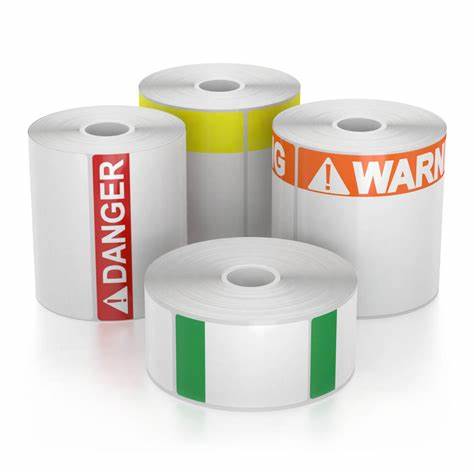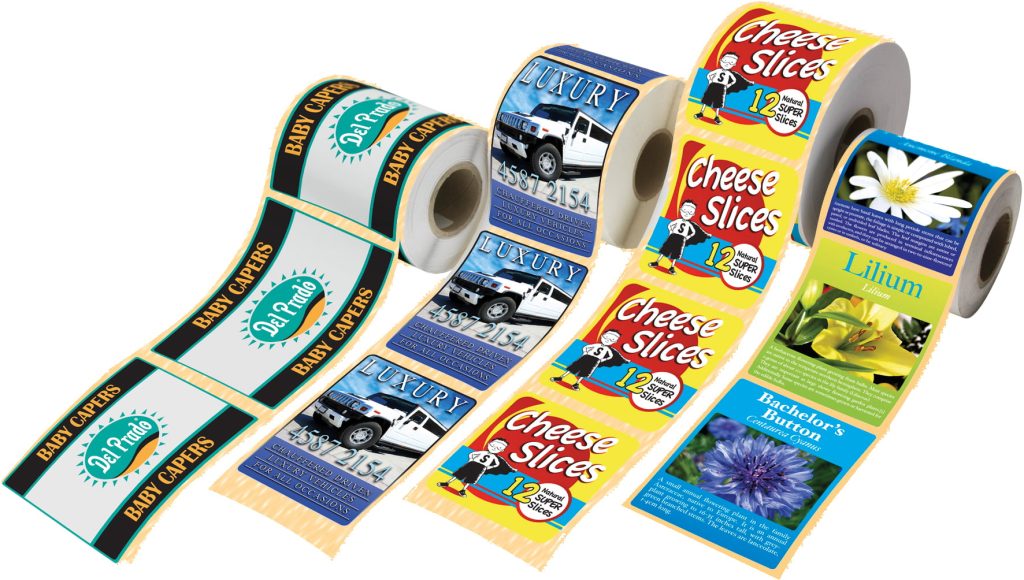In an era where personal craftsmanship and small-scale entrepreneurship are on the rise, homemade products have carved out a niche for themselves. From intricately designed handmade soaps and aromatic candles to gourmet artisanal foods and meticulously crafted goods, consumers are increasingly drawn to products that are created with care and attention to detail. For the dedicated creators behind these homemade treasures, custom labels serve as both a finishing touch and a powerful marketing tool. In this comprehensive guide, we will delve deep into the world of custom labels for homemade products, covering every facet from design considerations to printing techniques and best practices.
The Significance of Custom Labels

Before we embark on the journey of designing and printing custom labels for your homemade products, let’s first understand why these labels hold such tremendous importance:
1. Branding and Recognition
Custom labels are your product’s initial point of contact with consumers. They convey your brand’s identity, personality, and ethos, helping potential customers recognize your products instantly. A well-designed label can make your homemade creations stand out on crowded shelves, attracting discerning buyers and leaving a lasting impression.
2. Information Dissemination
Labels are the primary source of information for consumers. They provide essential details about the product, including ingredients, usage instructions, expiry dates, and crucial warnings. Clear and informative labels not only build trust with customers but also ensure they have all the information they need to make an informed purchase.
3. Legal Compliance
Depending on your location and the nature of your product, there may be legal requirements for labeling. Properly designed labels help you comply with regulations, ensuring that your homemade products meet all the necessary legal standards and safety guidelines.
4. Marketing and Promotion
Labels serve as a potent marketing tool. They can tell a compelling story, convey a persuasive message, or evoke powerful emotions. A thoughtfully designed label can pique interest, narrate the story behind your homemade products, and entice customers to explore and purchase.
5. Product Differentiation
Custom labels enable you to differentiate your products from competitors. You can highlight unique features, emphasize quality, and create a distinctive visual identity that sets your homemade products apart in a highly competitive market.
Designing Your Custom Labels
Now that we’ve established the significance of custom labels, let’s delve into the essential considerations for designing labels that resonate with your brand and captivate your customers:
1. Define Your Brand Identity
Before you put pen to paper, or in this case, cursor to screen, have a crystal-clear understanding of your brand identity. What values does your brand stand for? What emotions do you wish to evoke in your customers? What sets your homemade products apart from the rest? Your labels should seamlessly align with your brand’s personality, whether it’s rustic and handmade or modern and sophisticated.
2. Harness the Power of Colors
Color psychology plays a pivotal role in label design. Different colors elicit various emotions and associations. For instance, green often represents natural and organic products, while red is synonymous with passion and excitement. Extensive research on color theory is essential; choose a color palette that not only resonates with your brand but also speaks to your target audience.
3. Typography Choices
The choice of fonts can greatly influence how your label is perceived. Elegant script fonts may work wonders for artisanal products, imparting a sense of craftsmanship, while bold sans-serif fonts can exude modernity and strength. Regardless of your choice, ensure that your typography is easily legible and harmonizes with the overall design.
4. The Matter of Label Material
The material you select for your labels can have both tactile and visual impacts. Options abound, from glossy or matte paper to textured paper, transparent labels, and more. Think about how the material interacts with your design and complements the overall packaging of your homemade products.
5. Incorporate Brand Elements
Incorporate your brand’s logo and any other distinctive elements that define your brand. Consistency in branding across all your products is vital; it not only fosters brand recognition but also builds trust and loyalty among customers.
6. Clarity Above All
While creativity is crucial, never sacrifice clarity for the sake of aesthetics. Ensure that all essential product information, such as ingredients, usage instructions, contact details, and any necessary certifications, is presented in a clear, organized, and easily readable manner.
7. The Iterative Process
Before finalizing your label design, consider creating prototypes and soliciting feedback from potential customers, friends, or focus groups. This iterative approach allows you to fine-tune your design based on real-world input and preferences.
Printing Your Custom Labels

Once you have a visually captivating label design in hand, it’s time to bring it to life through the printing process. Here’s a comprehensive guide to help you navigate this crucial step:
1. Select the Right Printing Method
There are several printing methods to choose from when it comes to custom labels, each with its own set of advantages and considerations:
- Digital Printing: Ideal for short runs and quick turnaround times. It’s cost-effective for small batches and allows for high customization. However, it may have limitations concerning available materials and finishes.
- Offset Printing: Best suited for larger label quantities, offering high-quality results and a broader range of materials and finishes. It’s more cost-effective for bulk production but may entail longer lead times.
- Label Printing: This specialized method is designed specifically for labels, ensuring consistency and quality. It can accommodate various label materials and finishes, making it a versatile choice for those aiming for the best of both worlds.
2. Gauge Label Size and Shape
Determine the optimal label size and shape for your product’s packaging. It’s imperative that your label fits seamlessly and harmonizes with the overall aesthetics of your product’s packaging.
3. Materials Matter
Select a label material that aligns with your brand and product type. Common label materials include paper, vinyl, polyester, and more. Each material has its own unique advantages, such as water resistance or eco-friendliness, which can be leveraged to further enhance your product’s appeal.
4. Embellishments and Finishing Touches
Consider finishes like matte or glossy lamination, spot UV coating, embossing, foiling, or even die-cutting to add texture and durability to your labels. These finishing options can elevate the overall look and feel of your product, making it more enticing to potential buyers.
5. Test Prints
Before committing to a large print run, it’s crucial to perform test prints. This step ensures color accuracy and label quality. Any necessary adjustments to your design can be made based on the feedback derived from these test prints, ensuring a flawless final product.
6. Choosing a Printing Partner
If you lack the in-house capabilities for label printing, it’s imperative to research and select a reputable printing partner. Look for a company with extensive experience in label printing and a proven track record of successful projects. A good printing partner can offer valuable insights and recommendations throughout the printing process.
Label Application and Quality Control
After receiving your custom labels, the final steps involve applying them to your homemade products and conducting meticulous quality control checks:
1. Precision in Label Application
Pay close attention to the label application process. Ensure that labels are applied straight and without any air bubbles, wrinkles, or misalignments. A misapplied label can
significantly detract from the overall presentation of your product.
2. Vigilant Quality Control
Inspect your labeled products with a discerning eye. Look for any defects or inconsistencies, no matter how minor they may seem. Verify that all the information on the label is accurate and matches the product inside the packaging.
3. Maintain Consistency
Maintain a high level of consistency in label application across all your products. This consistency reinforces your brand’s professionalism, attention to detail, and commitment to delivering quality to your customers.
Custom labels are far more than just adornments for your homemade products; they are an embodiment of your brand’s identity and a crucial tool for conveying your message to your target audience. By investing time and effort into designing and printing custom labels, you not only beautify your products but also demonstrate your commitment to quality and professionalism.
The thoughtful integration of custom labels into your homemade products can lead to increased customer trust and loyalty. Whether you’re crafting artisanal soaps that soothe the soul, creating delectable homemade jams that tantalize the taste buds, or fashioning unique handcrafted items that spark joy, custom labels play an indispensable role in your business’s success.
It’s essential to remember that label design is not static. As your brand evolves and your product offerings expand, your label design may need to evolve too. Keeping your label design fresh, relevant, and aligned with your brand’s ever-developing narrative will help you maintain customer engagement and continue building your homemade product empire.
In essence, custom labels empower you to unleash your creativity and make your homemade products truly unforgettable. Your customers will not only thank you for the exceptional quality but also remember your brand in a crowded marketplace, ensuring your continued growth and success. So, seize this opportunity, embark on the label design journey, and make your homemade products shine brighter than ever before.
